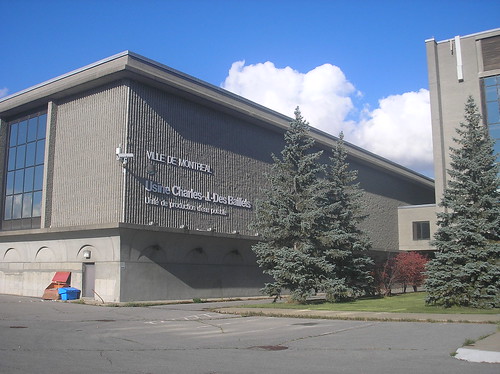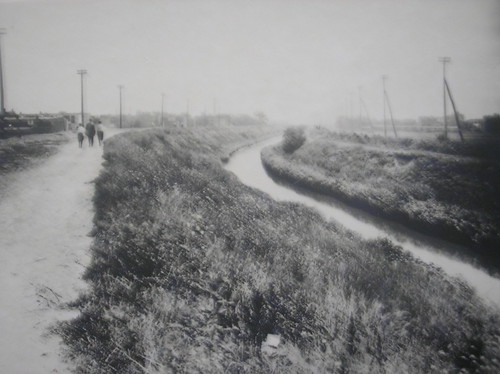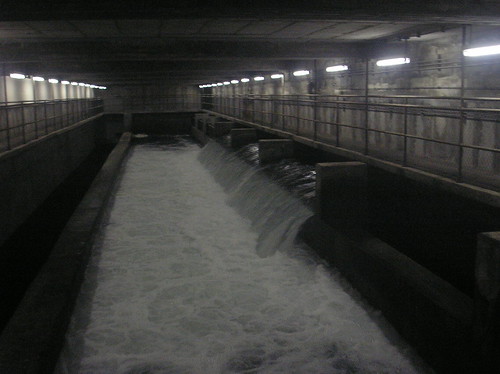
Beneath the streets of our city lies two vast networks of pipes and conduits. One to ensure a steady supply of fresh water is always on hand and another to carry it away for cleansing just as quickly. Barring any unforeseen clogs, frozen pipes or volcanic hydrants, we often fail to consider the energy that is expended on this massive infrastructure. Realizing how little I knew about our water infrastructure, I took a tour of the Charles J. Des Baillets water filtration plant in Lasalle – one of the city’s two purification facilities – to see what I could learn.

The Aquaduc Canal after its completion in 1918
The Des Baillets facility is located on de la Verendrye, near the beginning of the Canal Aquaduc, the canal completed in 1918 to bring water to the Atwater filtration plant. The total water purified by both facilities amounts to approximately 2.4 million metres cubed per day.
The expertly-guided tour lasted over two hours and took us from the point where water from the St. Lawrence enters the complex to where it is pumped into the reservoir to be distributed throughout the city. Basically, there are three processes that take place at Des Baillets: first, water is pumped into large filtration pools, where it runs through a fine grained sand, removing most bacteriological elements. Second, it is put in contact with ozonized air particles which has a germicidal effect. At this point the water is considered potable, but to ensure that it remains sterile throughout the distribution system, a dose of chlorine is added. From Des Baillets, the water is pumped to the McTavish Reservoir near McGill – one of seven – before being gravity-fed throughout the city’s infrastructure. Interestingly, the chlorine you (may) taste when you open your faucet depends on where in the city you live; the chlorine actually dissipates as water travels farther from the main reservoir.

Raw water is pumped from an intake in the St. Lawrence to the Des Baillets facility
While the scale of the Des Baillets facility and exhaustive safety precautions taken are impressive, the tour revealed some of the shortcomings of Montreal’s water purification process. For one, after clean water leaves the facility about 40% is lost through the cities leaking or cracked distribution pipes, many over 5o years old. Also, while all water is rendered fit for human consumption, only about 1% of that is used for cooking or drinking. The thought of clean water in the toilet (about 30% of the total) seems fine until one considers the enormous amounts of energy consume to purify it. The Charles J. Des Baillets facility is serviced by two direct hydro lines, each delivering 25 kilovolts of power, at a cost of $6 million per year.
Following my visit to Charles J. Des Baillets, I can’t stop thinking about water. While the mighty St. Lawrence provides us with one of the best natural sources in the world (even after other Great Lakes cities have made their mark) there is so much wasted in our city. Despite witnessing its stupefying power – even running at only half capacity – buckets have appeared my shower to collect what I can for toilet flushing.
Which reminds me that this exploration of Montreal’s water systems is only half finished. Stay tuned for the announcement of a tour of the somewhat dirtier side of things, which I believe takes place in Rivière-des-Prairies.

One comment
Hi.
I am currently pursuing studies in Technical Communication, and have a project to complete regarding the NDG water system, from source to tap. I was wondering if you had any info about how I could go about getting a tour of the filtration plant.
Also I was wondering if you ever got around to visit the waste management plant in RDP.
Thanks for your help,
Melanie